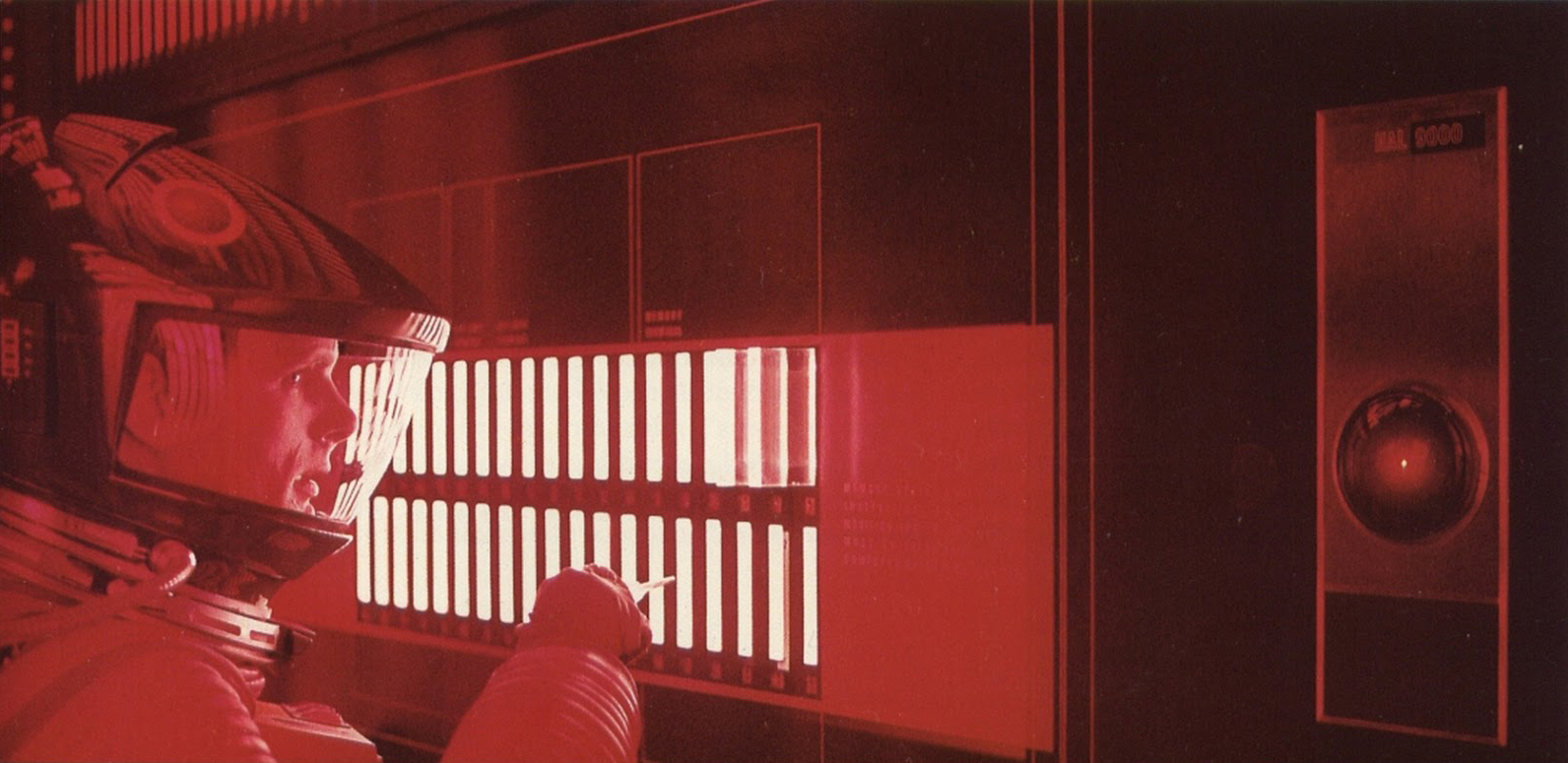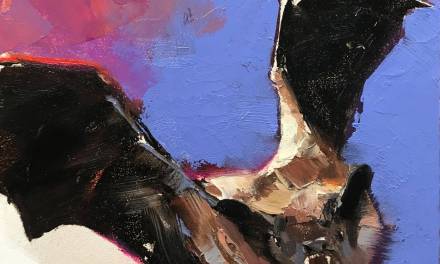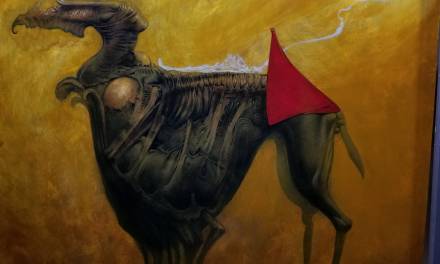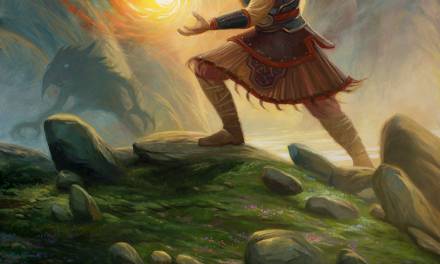
For the past 6 months or thereabouts there has been a lot of chatter online about the A.I.-powered tools like MidJourney, Dream, and DALL•E2 that generate art from text prompts. Type in the subject, type in a style of art or an artist’s name, pat your head while you rub your belly, and wham-bam you get an image. There have been articles about A.I. art here and there for the last few years but the new beta-apps have brought the subject to the forefront. I don’t pretend to know diddly-squat about any of it, but do know that the internet was abuzz with passionate supporters, experimenters, and vehement detractors (with plenty of the latter). I was reminded of all the hubbub and debates about digital art and artists when Photoshop, Painter, and ZBrush came along way back when: “How could it be A-R-T? How could they be real artists? A machine does all the work!” Of course that was all hooey then (the artist just used pixels instead of paint): the concerns being voiced now might not be, considering the ways the generators have supposedly been trained and how they’ll possibly be used in the future. There are a lot of unanswered moral and legal questions. It might be that A.I. is (or will be) just another tool that an artist might eventually use as they choose and not be the end of life as we know it—or it might be an insidious evil that ultimately hurts everyone. Honestly, at this point there are so many unknowns that I can’t predict what will happen. BUT…it’s always what an artist does with a tool (whatever it is) rather than the tool itself that makes art. Machines don’t.
Maybe. Again, I don’t know and can’t pretend to know what long-term effects these sorts of A.I. programs might have on the arts in the years to come (especially if they somehow become self-aware) so I thought I’d share a couple of videos below that talk about the subject. And then I wanted to ask our Muddy Colors readers: A.I. Art Apps, a good thing or a bad thing? Are you excited, angry, or worried? Please discuss.







I will say I am Interested. Much as you stated above, I see this as another step along the advancement of tool-use, not the death-knell of {ART}. Nor even of “art”.
Much of the hue and cry against this seems akin to the outrage against DTP software years back. I started ll remember the local paper being picketed by hot-typesetters when it shifted to digital. Seemed silly at the time. Absurd in hindsight.
Their ARE some interesting IP discussions to be had about the process and output. When the tech becomes good enough to produce original and powerful images that convincingly match the style of a beloved artist, say Frazetta… it will be a bit like seeing dead screen legends in new movies.
It will never be able to do that since it requires having material to drawn from, just like we do in our mind’s visual library.
We cannot create new what we already have not seen.
It lacks a layer of synthesis that Humans possess.
“It will never…” are words that time will put the lie to if historical advances are any indicator. Inability to achieve a result today becomes the impetus that drives innovation to realization tomorrow. Or some tomorrow. It won’t happen overnight, but this technology will advance the quality of its output to seeming parity with human-created works. “Never” is too long for something that’s only nascent at this time.
Gah. Please forgive the phone typos. Argh.
USE IT FOR PROMPTING and VARIANTS. It works beautifully for that already.
I think it will have a similar effect on paid art for advertising as photography did (i.e. ended the Golden Age of Illustration).
Personal/private art will endure as a form of human expression, but if art is just a commodity to sell a product, it will probably be (mostly) done by AI eventually because of the cost and time saving. That’s how capitalism is suppose to work—the most efficient producer wins. We don’t hand-sew clothes any more either for the most part.
AI art is more than just a tool. Professional illustrators have reason to be concerned about it taking some jobs away. However, currently it appears that the generated art cannot be given refinement notes, which would frustrate most Art Directors. You have to accept whatever the AI gives you based on the text prompts. But that may change soon, who knows?
I think there will be less impact on “fine art”, because the AI output is pixels. Hand-made original art made with love using real world materials should not be impacted. At least until a sophisticated robot is made that can skillfully paint on canvas.
I’ve been having fun with AI art, and I think it’s likely to become another tool in the toolkit for professional artists. I don’t think it will make illustration obsolete any more than the camera made portraiture obsolete. The possibilities for using AI-generated images as baselines for compositing images are very interesting, and if an AI like Imagen can become a low-cost tool to easily generate photorealistic images based on description, imagine how much easier that would make finding the perfect reference for a painting! “13th century helmet made of iron, 3/4 view, 5 feet from the ground, warm lighting, lit from the left side, several dents from battle” wait a couple hours and voila… 😀
This will cost jobs and livelihoods, and will create very few new ones. Almost like any innovation that claims to make our lives cheaper, easier or faster. There is a shelf-life to this way of thinking and the support for this style of “progress”. We may already have reached the ceiling of what is acceptable (morally or otherwise) in some sectors, but there is a major one still coming.
To support my argument, one just needs to look at the agricultural sector, where many advancements have been made to create the chain of food we live with today. Manual workers are competing with very efficient machines and are modern day slaves, even if we are too ashamed to admit it. Cheap food has not solved hunger either.
The time will come when we have to face the consequences and decide where we want to stand.
Every technology brings changes; some doors close while others might—or might not—open. Typesetters, color separators, paste-up artists and any number of other jobs disappeared with the proliferation of the desktop computer and scanner…but there are still calligraphers, font designers, photographers, retouchers, and digital production artists working. Photography didn’t kill painting nor did Photoshop and Corel Painter; ZBrush didn’t kill traditional sculpting: there will always be an audience (and clients) for hand-made art, but all of the tools that come along now and in the future will certainly have an impact, some for good, some for bad.
I’ve seen some interesting things being done; Jim Burns, particularly, has used A.I. prompts to create some concepts that he’s subsequently taken into Photoshop and refined nicely. His successful experiments are among the exceptions so far; most of what I’ve seen are hot messes that all look alike in their messiness, but I’m sure that will change as other artists gain experience.
Thanks for the input everyone! Keep your views coming!
Having a sophisticated robot sorry a 3D printer replicate impasto already happened years ago, in 2016 precisely.
Remember or look at “The next Rembrandt”